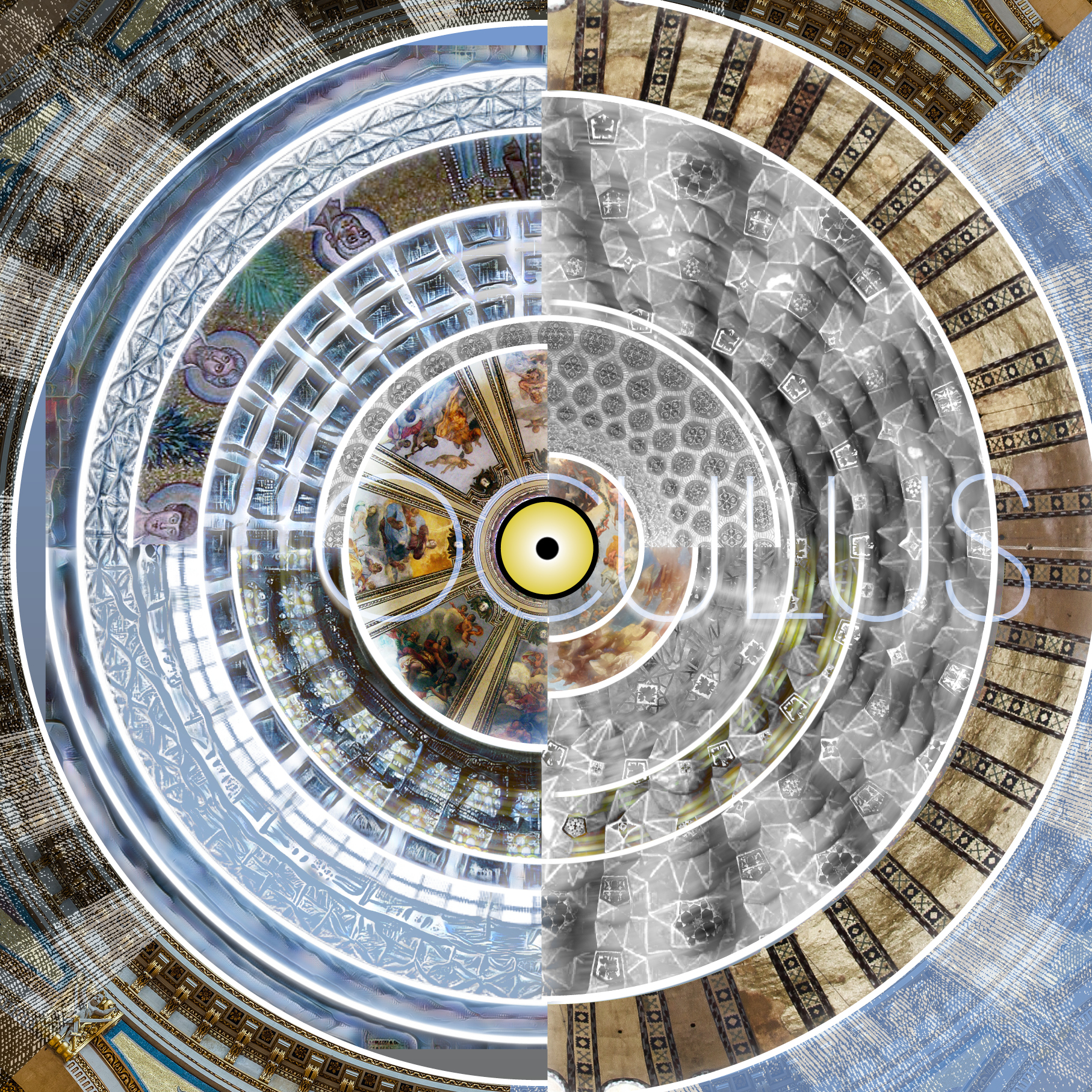•• Celestial gaze
Fridtjof Nansen The sky is like an enormous cupola, blue at the zenith, shading down into green, and then into lilac and violet at the edges.
•• The dome designates a hemispherical vault with a semicircular and elliptical profile. It is an architectural typology charged with resonance.
The Earth is dotted by thousands of domes. Each is unique and becomes a planetary node, the ultimate one being the Pantheon in Rome. Erected in the 2nd century, its 43.30 m in inside diameter is the largest dome of antiquity. Worldwide, it remains the largest in unreinforced cement concrete. Above all, it is pierced in its center with a 9 m in diameter oculus that opens to the sky. This architectural element makes this dome a universal symbol, both as a micro cosmos and as a human eye that scans the heavens in search of answers to the questions of mortals here below.
If the dome is the eye, the visitor could be considered the brain trying to make sense of what is perceived through this distant immaterial oculus. The dome then becomes an instrument like a giant telescope or a camera obscura in which we appear as an inverted image of ourselves.
Buckminster Fuller Just give me a home, in a great circle dome. Where stresses and strains are at ease.
•• The domes are an example of perfect architecture. They recall the perfection of the eye in its form and its ability to take in so many colors and textures while opening and closing in the face of light. Being in a dome is a memorable sensory experience, but we cannot perceive our eyes and cannot observe their interior. Yet they are our oculus to the outside world and the universe of sensations it offers us. The dome and the eye are marvels that we can never fully grasp.
•• Le regard celeste
Fridtjof Nansen : Toute la beauté de la vie n’est-elle pas haute, délicate et pure comme cette nuit? Le ciel est une immense coupole bleue au zénith, passant vers l’horizon au vert, puis au lilas et au violet.
•• La coupole désigne une voûte hémisphérique, de profil semi-circulaire et elliptique. C’est une typologie architecturale chargée de résonance.
Les milliers de coupoles parsèment la Terre. Chacune est unique et devient un neud planétaire, de même que toutes se réfferent les une aux autres dans l’espace et dans l’histoire, l’ultime réference étant le Panthéon de Rome. Erigé au 2e siècle, il supporte la plus grande coupole de l’Antiquité avec 43,30 m de diamètre à l’intérieur. Mondialement, elle reste la plus grande en béton de ciment non armé. Surtout, elle est percée en son centre d’un oculus de 9 m de diamètre qui s’ouvre sur le ciel. Cet élément architectural fait de cette coupole un symbole universel, á la fois micro cosmos et eil humain qui scrute les ceiux en quète de réponses aux questions des mortels ici-bas.

